
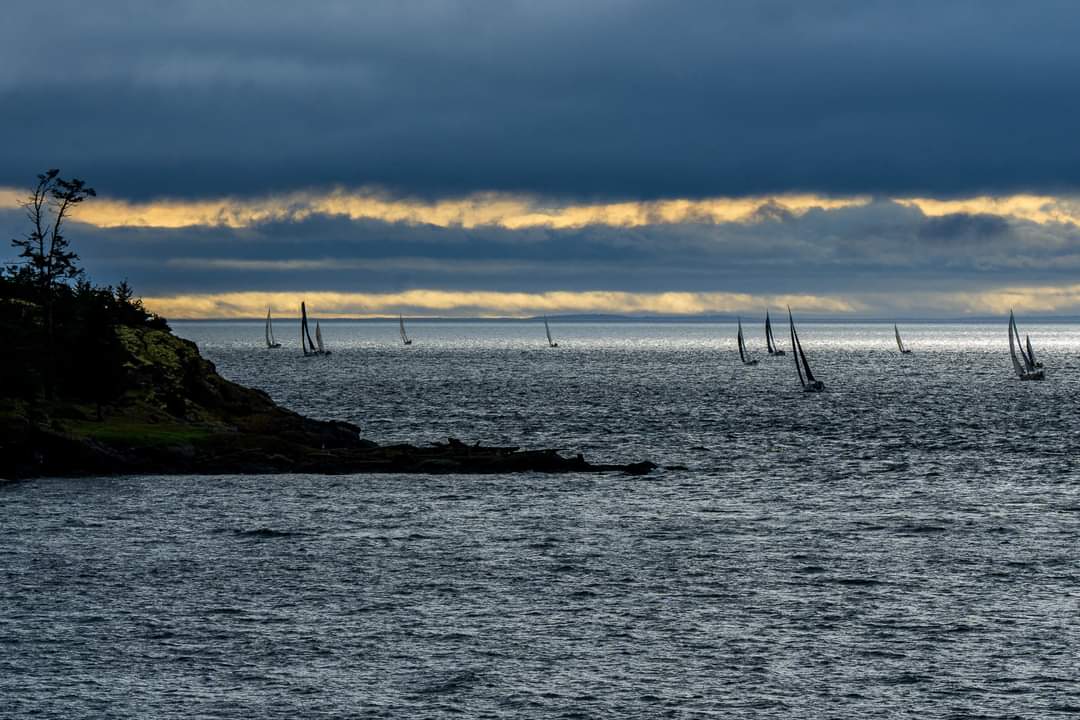
An absolutely epic weekend. Epic scenery. Epic rain. Epically bad start. Epically great first 30 minutes. Epic rain. Epic gale. Epic rain.
Did I mention “epic rain”?
I grew up in Hoquiam, WA. It rains over 80″ a year there. I did most of my hiking as a kid 60 miles or so away in the rain forest where it rains 140+” a year. So, when I say “epic rain”, I actually have some frame of reference for what I’m talking about and I have rarely been out in such heavy rain for so many hours straight.
The rain might be the click-bait headline for the weekend, but the real story from my perspective was the amazing crew One Life was blessed with for this race. Kelly, Andrew, Toddy, Morris, Pieter, and Kellen — plus Kris as our amazing shore crew. I really don’t have any words for how great they were — though the length of this blog post means I’ll probably stumble on a few just by random chance…
Successful racing programs revolve around finding and retaining great crew. I’ve tried many things to get that to happen, and I’ve sailed with some outstanding sailors in the 18+ months One Life has been in the water.
This group? It’s hard to describe but they just feel like… home. Some are very accomplished, some are experienced, and some are just starting out. As a group, however, they’re just remarkable and the biggest wish I’ll be making this upcoming holiday season is to be able to keep this group together — plus a few others who’ve been solid parts of the program especially towards the last part of the season — and race with them week in and week out next year.
For those who are not familiar, “Round the County” is a 2-day race sponsored by the Orcas Island Yacht Club. It’s the last major race of the season and a bucket-list race in its own right. In two days, sailors race 65 miles around the outside of the San Juan Islands — one of the prettiest places on the planet. The fleet is limited to about 110 boats and each year there is a waiting list.
It is, however, not the easiest race course to get to…
The One Life team effort began at 6am on Friday as Morris and I shoved off the dock at Shilshole just after low tide for the 60nm delivery up to Cap Sante Marina in Anacortes, WA. Weeks back I chose to go “inside” this time out of respect for the potential for nasty weather. This meant a potentially nail-biting trip through the narrow and shallow Swinomish Channel. Morris has done this a few times, but I never had. It turned out to be uneventful and we made much better time than I expected.
Saturday morning started with a 5:30am dock call. Most of the crew drove up the night before and stayed in hotels or on the boat. We shoved off about 6am for the nearly 2-hour motor out to the start line. The forecast for the race day was for very light winds and a following tide. In the skipper’s meeting the night before, the race committee warned people to not be over early as the light winds and tide push would make it difficult to get back.
Foreshadowing…
There are over 100 boats in this race, grouped roughly evenly into 3 starts. The first start was a nightmare, with 40 boats crowding the boat end and a half dozen boats over early. We took one look at that and decided to start well down the line.
We were in pretty good shape, well away from everyone else and itching to pop the A1.5 for the downwind start. I thought we were on the correct side of the line, but we were not and ended up being the only boat in our 33-boat start over early.
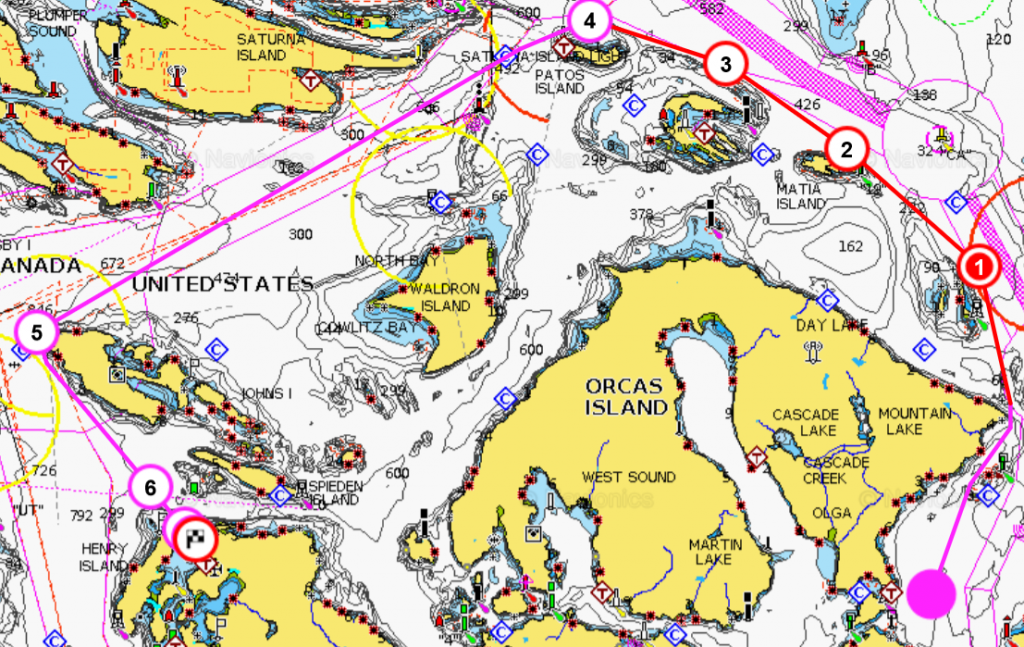
Seven very long minutes later (more foreshadowing), we finally made our way back over the line to restart. Fortunately, the race rules allow you to start at least 30 minutes late, so we didn’t have to endure a DSQ. Some of the first start boats were still trying to make their way back when we finally started for real.
One reason it took us so long to get back was the wind died — not just at the start line but pretty much for our entire second start. They all gybed after the start and headed east and were pretty much in a big gaggle.
The south wind came back and allowed us to get back to the line. We were fortunate to hook into it really well and ride the front end of the building southerly to reconnect with the tail the fleet.
We chose to stay inside much closer to the Peapod Islands, which conventional wisdom says to avoid. But with the wind quickly clocking east due to local topography, and tall islands on the east side of the course blocking the wind, we took the bet and stayed ‘inside’ while all the rest of the fleet except for a pair of 4th-start trimarans went ‘outside’.
This worked brilliantly for the next 30 minutes or so. We were passing boat after boat and working closer and closer to the middle of our start pack. This was perfect setup because not only were we fast reaching on a hot beam angle, the rest of the fleet would be stuck on a slower downwind angle to close back up with us as we cut the corner at Lawrence Point.
Of course, the wind gods sent a big left shift across the course. We couldn’t quite carry the A1.5 and had to switch to the J1 to clear the Peapods before we could re-set the A1.5 and get around Lawrence Point.
A lot of the fleet continued to take the outside track, though the faster boats closed back up with us inside. We kept on the inside track around the rest of the course and did very well, passing a lot of fast boats in the process.
The wind picked up after rounding Patos Island and the VMG course was more downwind than the fast reach we’d been doing, so Pieter (who works at Doyle Sails Seattle and a fabulous recent addition to our crew) convinces us to do a spinnaker peel. 5/7ths of our crew — including the driver, both trimmers, and our bow person — have never done one. He organizes everything and we talk through it. The crew pulls off this textbook beautiful spinnaker peel. Nothing gets wet, the boat barely hiccups in speed, and we’re back to racing fast to make up the time we lost due to my idiot start.
One “unique” thing about the Saturday finish is the race committee doesn’t tell you exactly where the finish line will be. They give a general location, but it’s a pretty big area, and the Sailing Instructions say the RC will “regularly broadcast” where they are. That wasn’t happening and the finish boat didn’t have traditional AIS, so we were at a bit of a loss.
As we approached the finish, we ended up guessing the line was farther right than it actually was. We come flying down the last beat on port tack into driving rain — after doing 2/3rds of the course under spinnaker and sprinkles — and the wind starts shifting right and dying. Not only is it clear in the last 150 feet to the line we’re not going to make it unless we tack over to starboard, we have the 84-foot schooner Martha also on port tack immediately to windward.
I mean, I could have been an asshole and scream ‘starboard’ at them after we tacked, but what are they gonna do? You don’t just casually tack an 84′ schooner right at the finish line in front of a dozen (or more) other boats.
So, we suck it up, tack on to starboard, and fall off to take their stern. We’re about a boat length or so from crossing when Martha starts her own tack. Turns out, she’s not gonna make the line either. I sense an opening to the line, yell for a crash tack, and throw the tiller over before my crew really registers what I’m saying — much less have any chance to start moving off the rail.
To digress for a moment, if you look at pictures of Martha you’ll see she has a really unique stern. You can see it about half of it in the picture below.
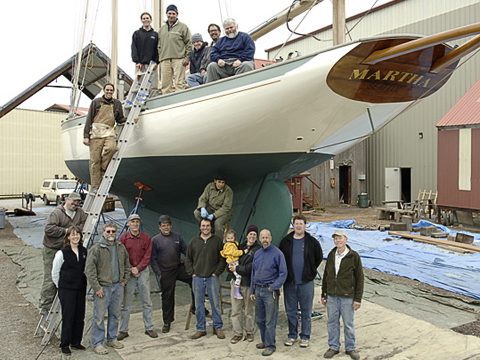
Also worth mentioning is yours truly was burnt by this point. After blowing the start for our team, I stayed at the helm all but about 15 minutes of the day. We were banging upwind, it was fucking pouring, and I had NO idea where the finish line was until about a hundred yards out. I was driving like splick. Couldn’t keep the boat on her feet in the gusts and we’re getting passed by competitors left and right like we’re in some slow motion car crash as I’m trying to find the damn finish line.
Anyway, back to the story…
I knew we were going to give up a lots of spots to our competitors when we had to duck Martha at the line despite the fact we were on starboard (and no, I wasn’t going to pop a protest flag on port-tack Martha for the same reason I wasn’t going to scream “STARBOARD” at her — I like to win but I’m not an asshole). But when Martha did her own tack to make the line, those competitors now had 84 feet of schooner between them and the finish line.
I’m so excited Martha is now out of the way when I start the crash tack to clear her stern, that only about half way through the tack do I see that loooong wooden thingy (technical nautical term there, ‘thingy’) sticking out of her stern.
So I’ve got 4-ish feet of carbon bowsprit on One Life sticking out my front, and Martha has what is now looking to my ever-widening eyes like 20 feet of big wooden logs sticking out the back of her stern. I look up and there’s some dude (also with ever-widening eyes) on Martha looking at me, then down at his stern, back at me, down at my bow, and back at me, while I’m willing my boat to tack like she’s never tacked before.
As you can probably guess, if only because you didn’t read in the papers about some asshole drilling a classic wooden schooner in a race, we missed Martha. But I ended up overtacking and the crew, who got minus 5 seconds notice of the tack, understandably didn’t get the jib across very cleanly. Current, plus a big wall of sails to windward from Martha and all the boats also tacking to avoid running into her 84 wooden feet now athwart the finish line, means we’re going to miss the damn mark again…
So, we run right up to the line and tack over to starboard. Most of the boats who got walled off from the line have finally cleared Martha (how they managed so fast, I do not know), and are racing back to the line on port tack with a head of steam. We’re moving slow as molasses, but I have enough speed to tack us back to port right on their line to protect what little lead we have left after all this finish line drama. We get the tack done cleanly, but we’re still slow.
We cross the line, but now we’re drifting sideways fast into the finish buoy. I start hollering at the buoy, “SHOO! SHOO! Damn you, SHOO!” This, perhaps not surprisingly, has no apparent effect. We get about 2/3rds of the hull past the damn thing and it is clear we’re going to hit.
In a last minute prayer of a move, I put the tiller hard over to port to try and swing the ass end of the boat away from the mark…. and damn if it doesn’t work. We button-hook the finish buoy with maybe 2″ to spare. We’re now pointed back up the race course, but we’re clear of finishing boats and drifting away from the damn buoy.
Everyone on the boat cheers and I immediately collapse to the deck in relief. As pandemonium breaks out on One Life at how close we came to having to go around again, the Race Committee hails and protests us for hitting the finish mark!
I immediately get on the radio and promise them we cleared it by two inches. After a bit of back and forth, the race committee comments how competitors will have to support my claim. The crews of The Boss and Audacious both come on the radio immediately to confirm we did not hit the mark. The Race Committee apologizes — which was appreciated but absolutely not required. After a brief moment as our entire crew encourages and cheers Semper Quaerens as they attempt and successfully pull off the same button hook around the finish mark we did — I collapse on the deck all over again.
And that right there? The fact two competitors were so on-the-spot over the radio to bail us out? That’s why I love this community. Audacious is not in our class, but we tacked right in front of them to get to the line. The Boss is in our class, and staying quiet could have made the difference in the standings to them. Nevertheless, both came to our rescue.
The Boss and Audacious, beers are on me next time we meet.
We end up in 4th on corrected time for the day, 7 minutes (remember that amount of time from the blown start?) behind our sister J/99 Dash in second place. Crossing the line less than a minute behind Dash was 3rd place Zig Zag. Elusive crossed first and our new best friends on The Boss rounded out the top five in our 10-boat class.
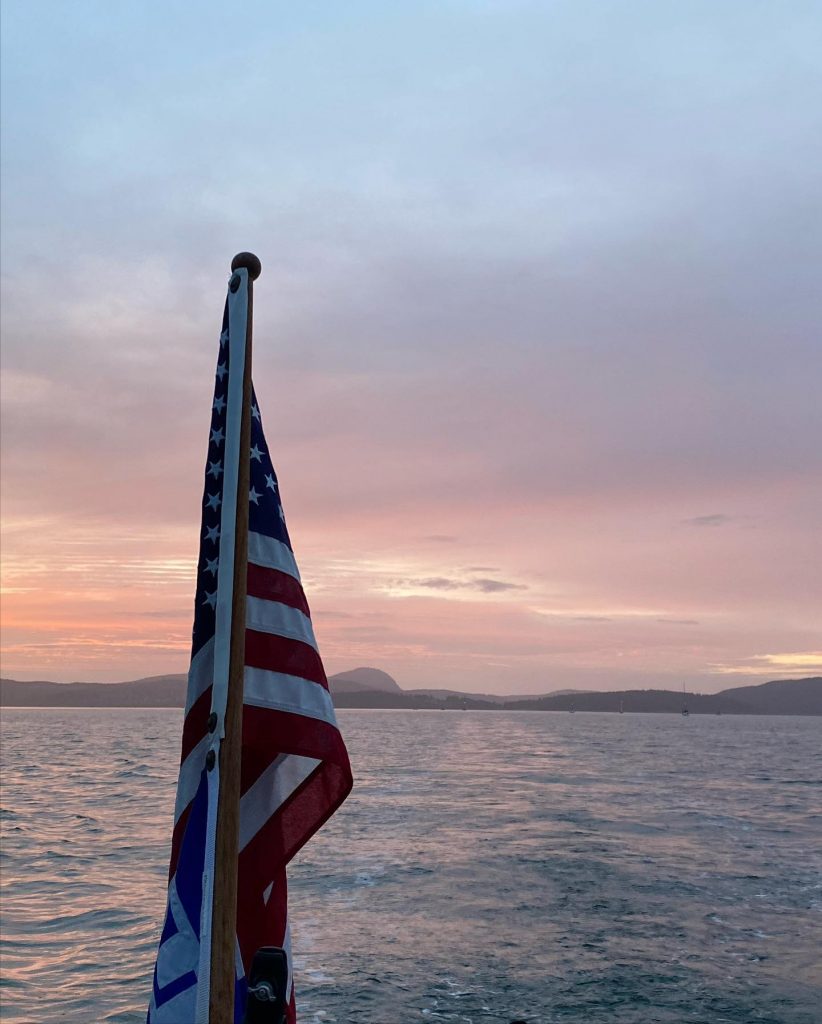
Sunrise on the 2-hour motor to the start 
5:30am dock calls are rough on crew! 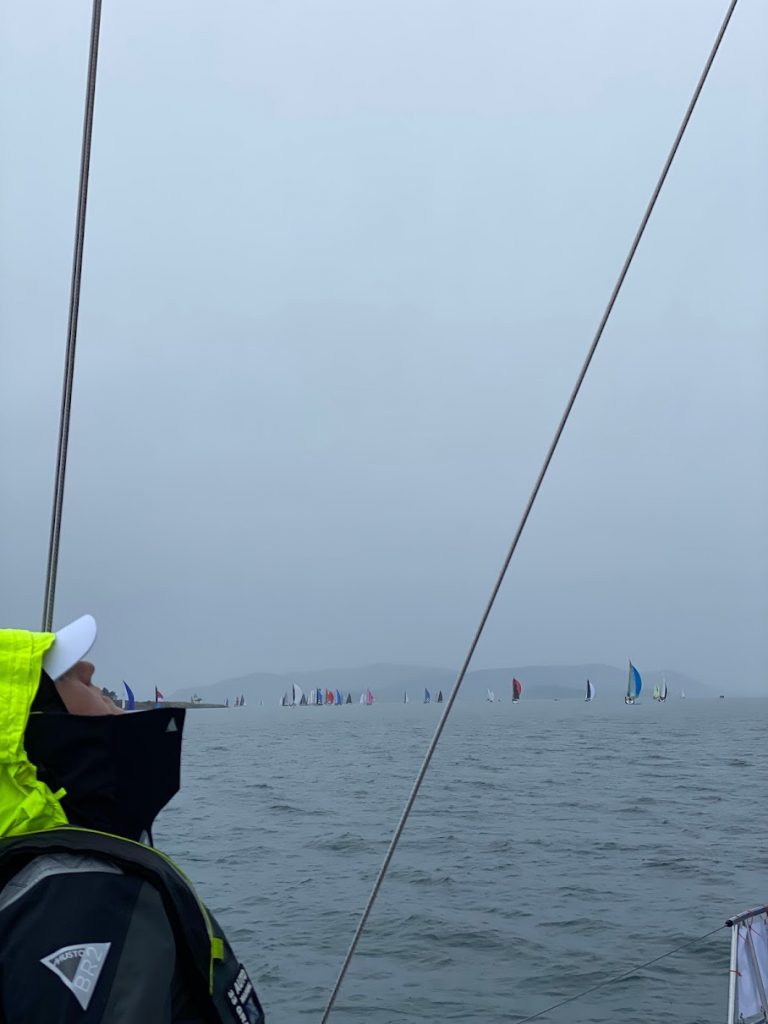
When skip blows the start, everyone is ahead 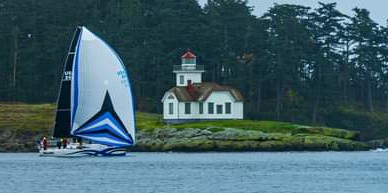
Dennis Pearce takes so many great shots of One Life
We get docked in the pouring rain and walk up to the rented condo. Kris already had the lasagna in the oven and the rest of the food prepped. We all peel off our sopping wet gear and take turns in the shower. Dinner, soft seats, and warm house never felt so good.
Sunday dawned raining, of course. It was still a fair ways to the start line, but not like the day before. Dock call was at a much more civilized 7am. The forecast for the day was all over the place, but most forecasts agreed we’d have 20s gusting 30+ in the morning. One Life starts with the J3 on, plans to reef if it is solidly in the 20s, and the A4 and Code Zero on top of the sail stack below.
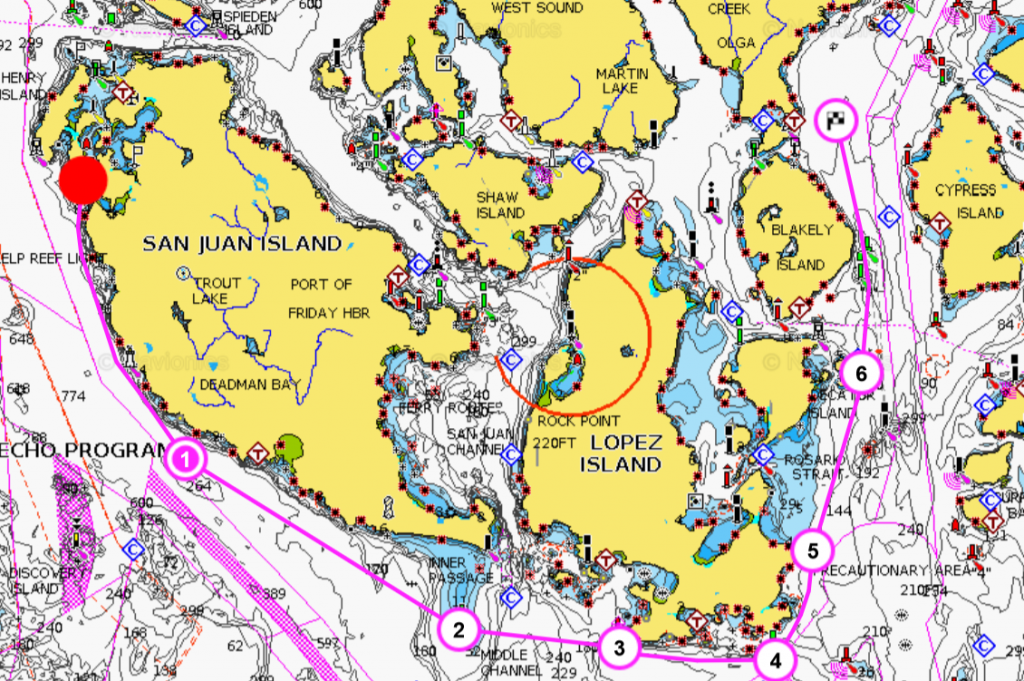
The reality was a bit different. The starting area was very compressed by shallows on the west end, so 100+ boats were banging back and forth whipping up the narrow start area at the bottom of Mosquito Pass. Winds were in the low teens on the east end and upper teens on the west end of the line. As we waited to start, winds clocked around to the left, making a starboard start almost parallel to the line.
Everyone in the first start bunched up at the pin end. The boats who won the first 500 yards after the start, however, port tacked the fleet from the boat end. You could hear the gears turning, even over the blustery wind, as all 30 of us in the second start were trying to figure out if we could also port-tack the fleet.
That was certainly our goal on One Life. On this day, we were smart enough to use our electronics to ping the pin and boat to help us NOT be over early again. (Yeah, the idiot skipper forgot to do that on Saturday.) There was so much congestion, and so many others trying the same thing in our start, we didn’t have room to pull off a port tack start. We did however, start with a big run at the line and a ton of room to weather. We were able to stay faster and above the boats to our immediate leeward.
We badly wanted to tack back out, so it was a bit of a dance on the helm to keep above the leeward boats, preserve our windward space, yet flatten out enough to allow the boats windward of us to climb out of our tacking lane. We found a (small) lane, the crew executed a perfect tack, and we shot the gap out into clear air.
We ran the first part of the race pretty much the reverse of the prior day. With clear waters to windward, we really didn’t want to get sucked up into the leeward island shore and risk slower breezes. By the time we tacked back to head more directly east, we were outside nearly the entire fleet — which was the key for the day.
As the wind slacked off, we knew we were in trouble with our sail plan. We had the J3 on and the wind was quickly dying into J1 range. Fortunately, the wind started clocking east for a while. And because we were positioned well to windward, we had enough room to fall off and launch the Code Zero.
The strategy was to live under the Code Zero for long enough to get the J3 down off the furler and the J1 up in its place. This worked almost perfectly, until a big left shift had us heading nearly straight toward shore during the last bit of the headsail change. Neverthless, we got it done without losing too much of our lead over most of the fleet — who had generally stayed inside for current relief and were suffering in a dying wind.
The wind did a big right shift not too long after we got the Code Zero back down, so we launched the A1.5 and started a repeat of our ripping reach on Saturday. We were picking off boat after boat by staying outside. It was tough going with big swells on the beam, but the trimmers and crew were doing a fabulous job.
The wind picked up quite a bit, and shifted right again, so we decided to go for another peel from the A1.5 to the A2. It all started out pretty good, but as the A1.5 was being doused after the peel, it snagged and opened the halyard clutch for the A2 and the A2 shrimped badly. A miscommunication had the A1.5 headed part-way back up, causing it’s foot to catch air and promptly also shrimp.
To digress for a moment, if you read back two blog posts (or are from this area) you know we had a death in our racing community this summer due to a spinnaker incident. Here I have not one, but TWO kites shrimping in the water and my entire crew standing on spinnaker cloth criss-crossed by all manner of halyards and sheets.
I was fucking terrifed for several moments.
We got the boat slowed. I managed to keep the main from gybing and braining anyone. The crew collectively took a deep breath and checked their personal safety and the safety of their crewmates. And then they got to work hauling not one, but TWO shrimped kites back into the boat.
We finally got the A2 back up — miraculously with no damage, kudos to the gang at Doyle Sails who built all our sails on One Life — but we lost a lot of ground. I was slightly relieved at the no damage part, didn’t care less about the losing ground part. I was nearly in tears I was so happy we managed to escape that disaster with nobody being hurt.
On the plus side, this crew now has the ultimate beer hall story.
“You shrimped one kite? Pshaw. Let me tell you about the time we shrimped TWO KITES AT THE SAME TIME!
Remember me mentioning at the top (it’s OK if you don’t, I realize I’m on a bit of a writing roll here…) how good this crew was? Like 20 minutes after we get the A2 up the wind starts clocking right again and dying. Pieter notes we can’t go out on a shitty peel like the last one, so we ought to do one again. So we do another one, perfect this time, down from the A2 back to the A1.5 — which is also, somehow, undamaged.
We start making good time again. Most of the other boats in our class are starting to disappear over the horizon and we’re catching some of the boats ahead of us. The wind continues to die and gets shifty.
We screw up remembering to mark the halfway time until we’re like 5-10 minutes beyond the mark, but thankfully remember before doing ourselves too much damage. We slowly work our way around Pt. Colville and Boulder Island and start heading north to the finish line. It’s slow going, but the nav is still predicting we’ll finish on time.
From here, it’s just even more rain and ever-softening breeze as the strong southerlies we want aren’t able to push back the rainy, light northerlies we’re getting stuck with. By early afternoon, the rain is coming down harder and the wind is blowing lighter.
Spirits are pretty high on the boat, considering we’re moving slow and the rain gets harder every hour. We crawl up the east side of Decatur and James Islands, and the wind shuts off. Dark is coming, the rain is starting to get even harder, and the tide is even stronger. We make it about halfway across Thatcher Pass and the wind dies. A Washington State ferry is approaching, and we hail it on VHF to let them know we’ll stay out of their way so they can pass their port on our bow so we don’t have to start the engine to avoid them.
The rain strengthens more as the tides push us backwards. We’re less than 5 nautical miles from the finish with 90 minutes left when one of our crew looks at the SIs and sees a rule stating that if a boat in a class finishes — which we’re pretty sure Elusive has done — people who DNF get the finisher time plus 1 hour and people who retire get finisher time plus 2 hours.
The crew unanimously, and without any input from me I might add, decides to “Strategically Suffer”. Every time we hear a boat in our class retire, a big cheer goes up. I read the SIs and see the same thing. A third crew member also does.
And the rain comes down even harder.
About 40 minutes before the 6pm time limit, the RC hails the fleet to ask if anyone is still out racing. One Life is the only boat we can hear answer, though we can see a couple others on the AIS between us and the finish line.
We gut it out to 6:01 and hail the committe boat, thanking them for sticking it out to give us a chance to finish and confirmed we were DNF and not RET. In fact, the wind did come up two more times in the last 90 minutes, but we never got closer than the same middle of Thatcher Pass before it died.
Happy that our Strategic Suffering solidified the position ahead of the rest of the class (except Elusive) we’d demonstrated on the race course by making it as far as we did, we settled in to the 2-hour motor back to Anacortes – that was now nearly a 3-hour motor due to a strong tide on the nose. We were in pretty high spirits, nonetheless, thinking our Strategic Suffering put us in second place for the race.
It turns out, whatever the three of us read that Sunday evening wasn’t actually a rule. We’re still trying to figure out what made us think that DNF was +1 and RET was +2. Instead of our Strategic Suffering clinching a second place behind Elusive, we end up fourth in our class and 55th overall.
But we didn’t figure that out until Monday afternoon.
On Sunday night, proud of all we accomplished as a crew in really nasty conditions, I settle in on the bow as it starts raining even harder. I have my headlamp on to scan for debris and crab pots while Fred (the autopilot) drives. The crew goes below to get out of the rain, firing up the heater and the kettle to warm themselves up. I’m clipped in, but I ask someone to peek out frequently to make sure I haven’t been bounced overboard.
About 10 minutes go by and I’m startled by a tap on my shoulder. One of my crewmembers informs me we’re doing 10 minute watches and to hand over the autopilot remote and the tether and get my ass below to warm up. Apparently, they decided amongst themselves this was the right thing to do. Two people at a time, one in the cockpit and one on the bow, every 10 minutes in the driving rain — like Noah’s Ark apocalyptic rain.
Nobody complained. They all just did their turns and spent their down times drinking hot beverages, warming up in the blasting heater below, and starting to tell the stories of an epic, epic race weekend.
Damn, I love this crew.
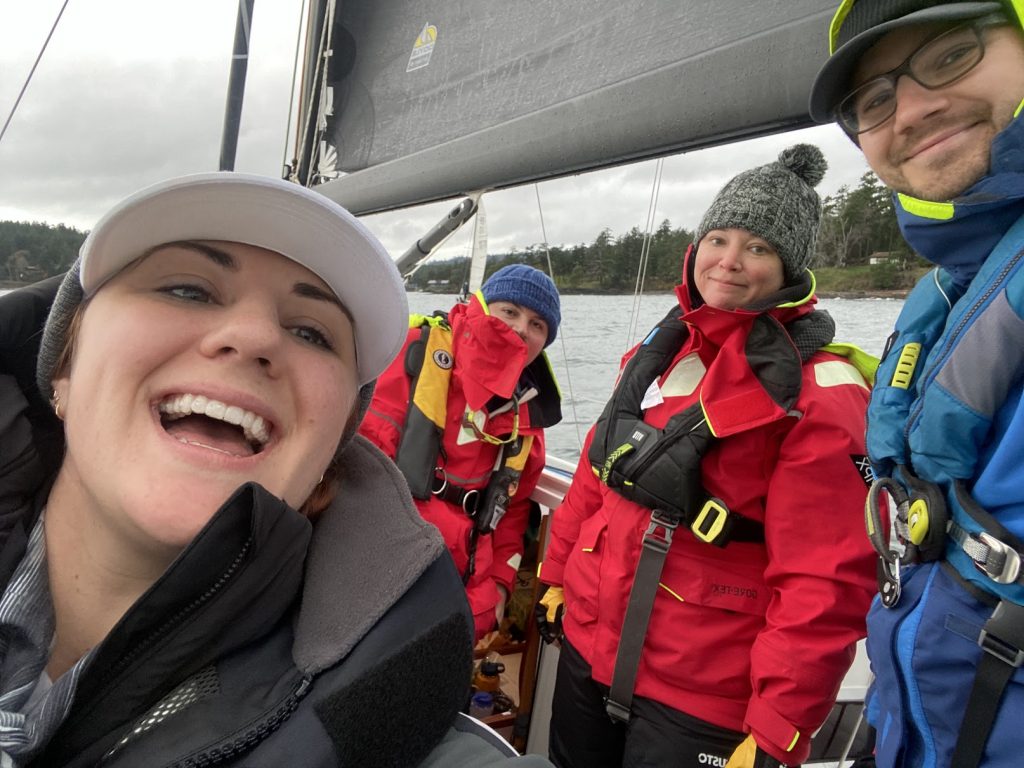
All smiles before the start 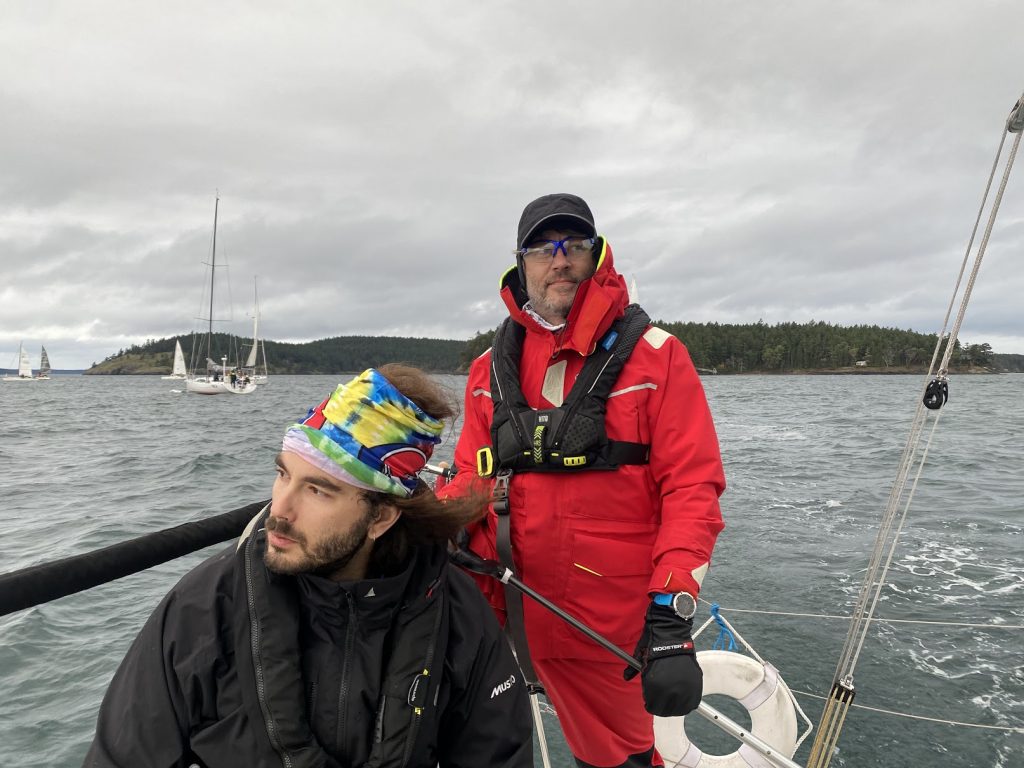
Afterguard is clearly too serious. 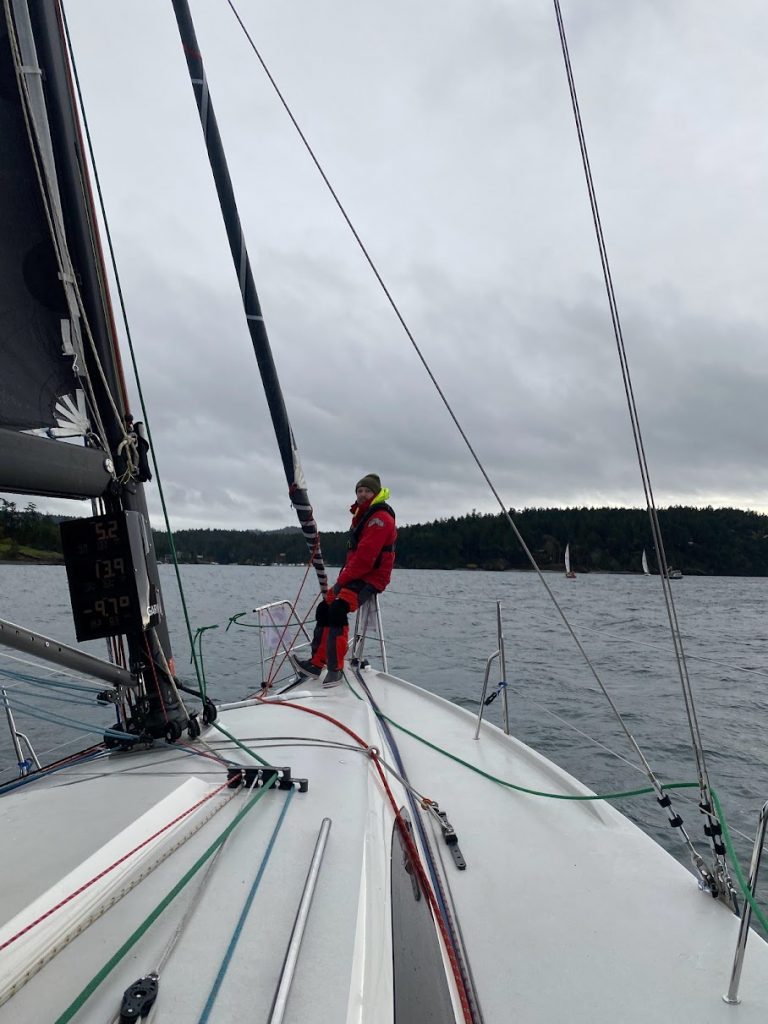
Bow guy is lonely. 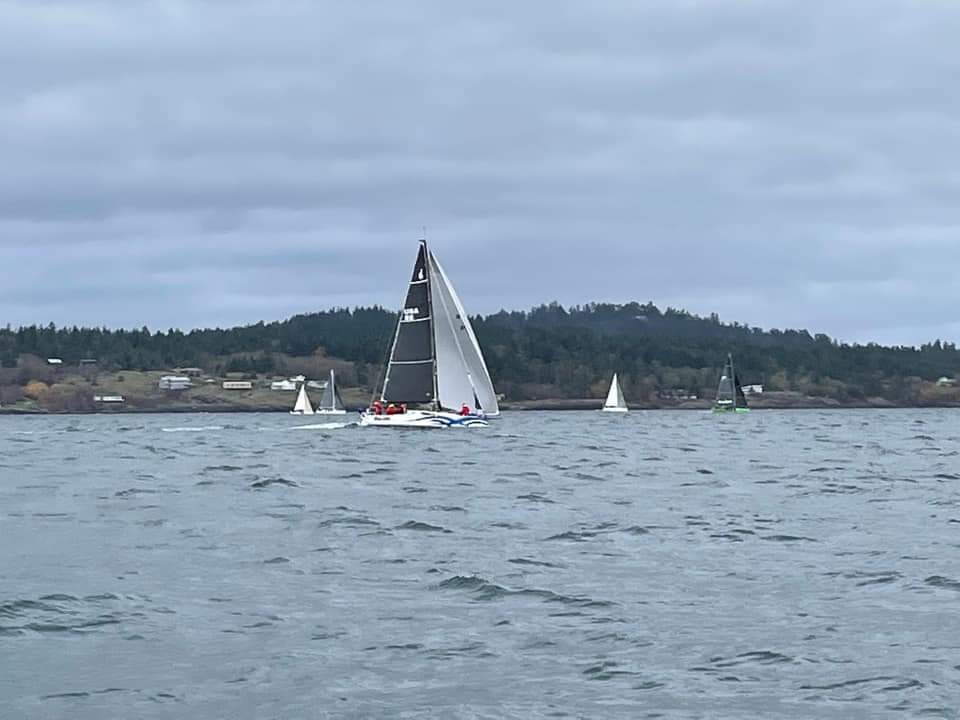
Pretty sure this is right after the
Dual Shrimp Incident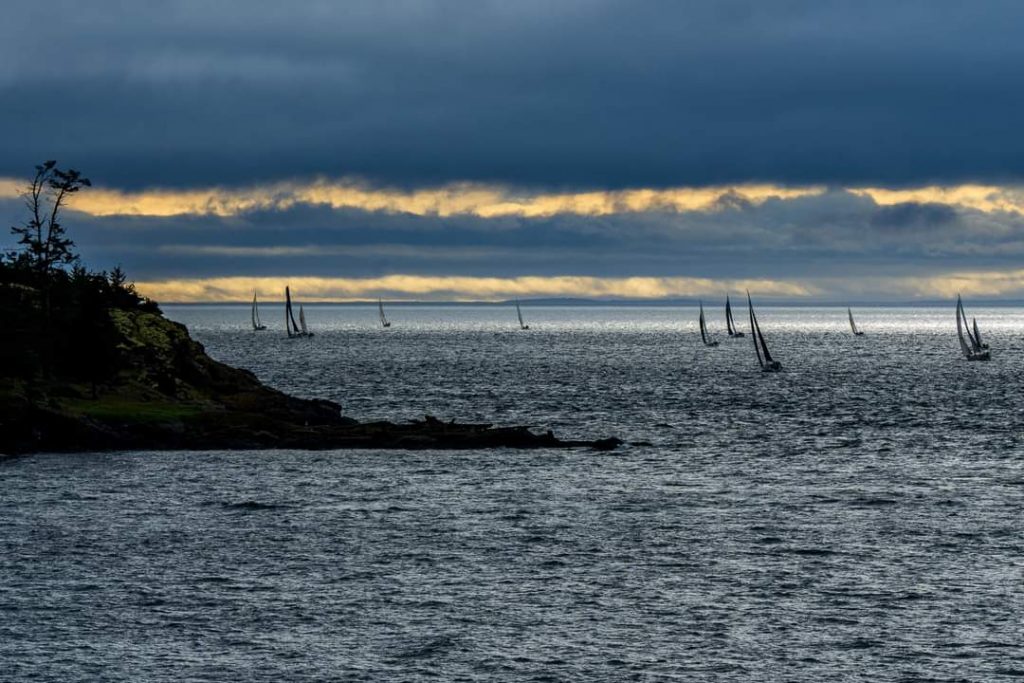
Such a beautiful sport 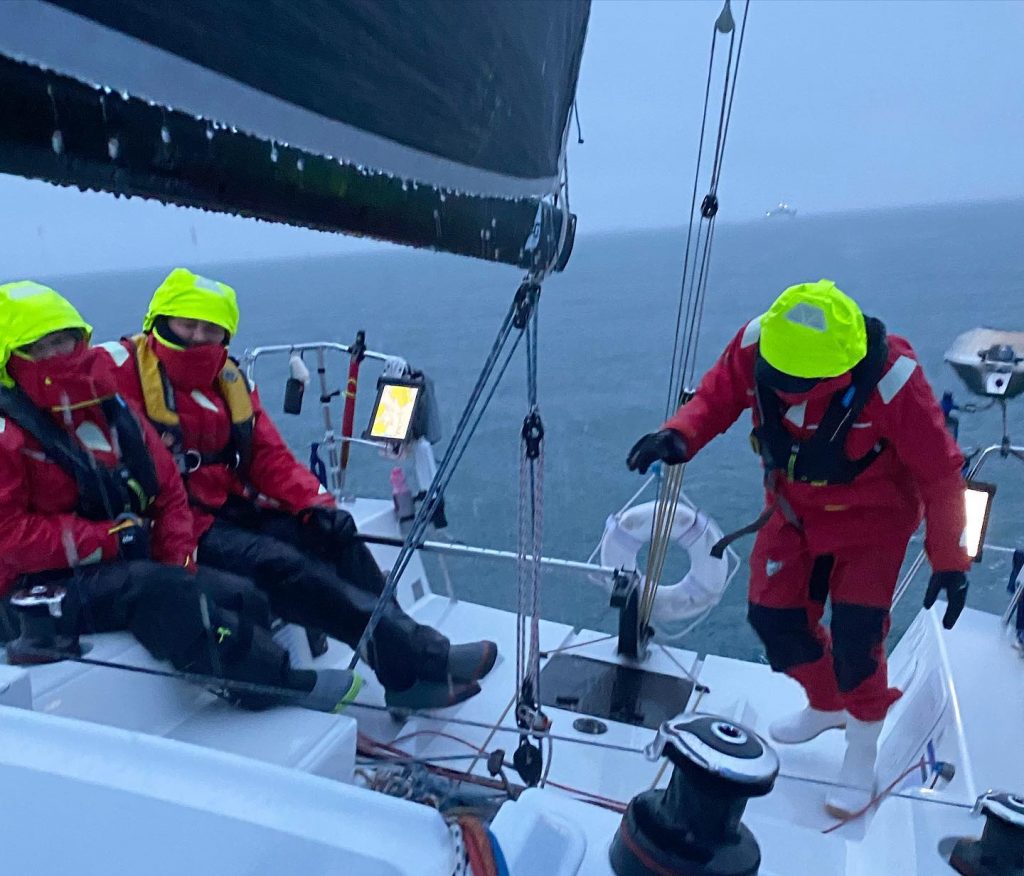
Not even the heaviest rain of the day.
Normally, the story would be over at this point. The crew is back at their cars and, except for the delivery crew of Kellen, Andrew, and I, headed home. During one of my off watches on the rainy trip to Anacortes from the race course, I book a hotel room as there is no way we’re going to be able to sleep on the boat. It’s simply too wet.
Honestly, that hotel was the best money I’ve ever spent.
As we go to bed, we peek at the updated weather forecasts. And, in irony of all ironies given we spent 90 minutes languishing in no wind not 5 miles short of the finish, our delivery home day is now forecasted to be steady 30s gusting to 50s. We agree to go to bed and evaluate in the morning.
About 4am it finally stops raining outside, but the wind starts making the windows in the hotel shudder. We get up at 6am, meet at the boat at 7am, whereupon I call it. It’s already blowing in the upper 20s and I’m pretty sure I wouldn’t be able to get the boat off the dock in one piece.
Thankfully, Lizzy was still in town and was able to give Kellen and Andrew a ride home as they both had to be at work Tuesday. The rain restarted and I stayed with the boat as it rocked and rolled on Cap Sante — whose marina staff was fabulously accomodating to the Seattle-based fleet staying there for an extra day.
In the early afternoon, the rain finally broke. As it did, it brought the gale force winds the forecasters were promising. I opened up every window in the boat to start drying things out. The diesel heater, an electric heater, and 40-knot winds pretty quickly did a good job of that. Just before I toddled off to lunch, the winds hit the 50s.
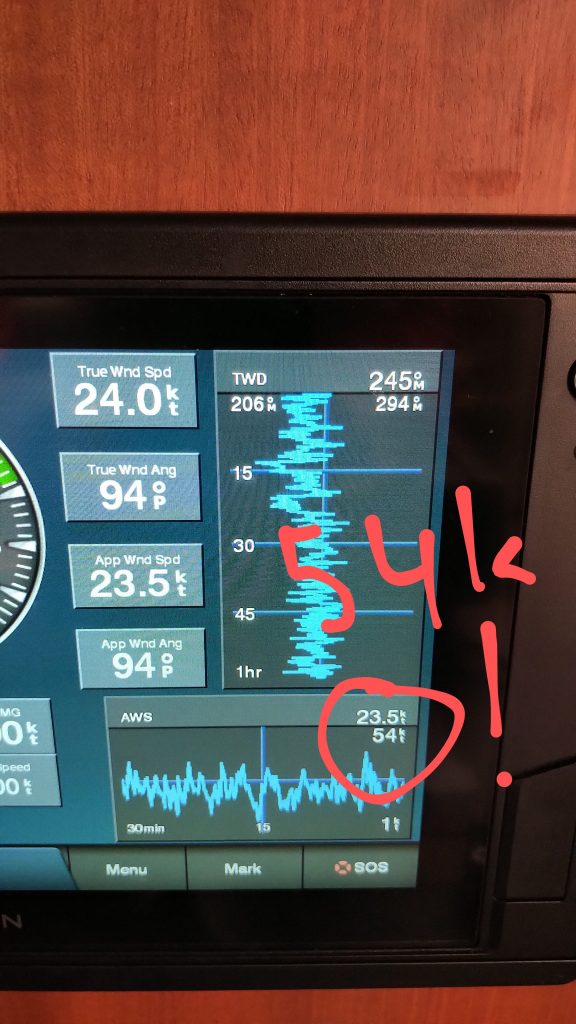
Sometime during lunch my anemometer gave up. That was pretty annoying, but between the deluge and the high winds there’s probably a soaked or separated connection somewhere.
Things started calming down a couple hours after dark and I got a surprisingly good sleep on the boat. My bosses were cool with me staying an extra day, telling me only to make sure to stay safe.
Tuesday dawned blustery, but calmed down pretty quick. I made it off the dock with not much drama, topped off the tanks at the fuel dock, and then soloed One Life the 60nm home via the Swinomish Channel. The exit to Skagit Bay was the worst part. A nearly 2-knot current push straight into the teeth of a 15-20 knot westerly. The depth meter hit 2.5 a couple times as she pounded into the bottom of waves. Note to self: Don’t bother trying this route with a tide any lower than +4.5 feet as measured at La Conner.
Shortly after exiting Skagit Bay, the sun came out for a little while — at least until I picked up a cloud clearly intent on following me most of the way home. The little bastard alternately dumped rain and hail on me for about half the trip. But that was OK. I had the dodger on, the heater roaring, pizza and bacon on the grill for lunch, and the tea kettle supplying me with a steady stream of hot chocolate or hot tea. It ended up being a rather beautiful and memorable delivery home, which I reached just as the sun was going down. A nice end to 80+ hours on the boat over 5 days.
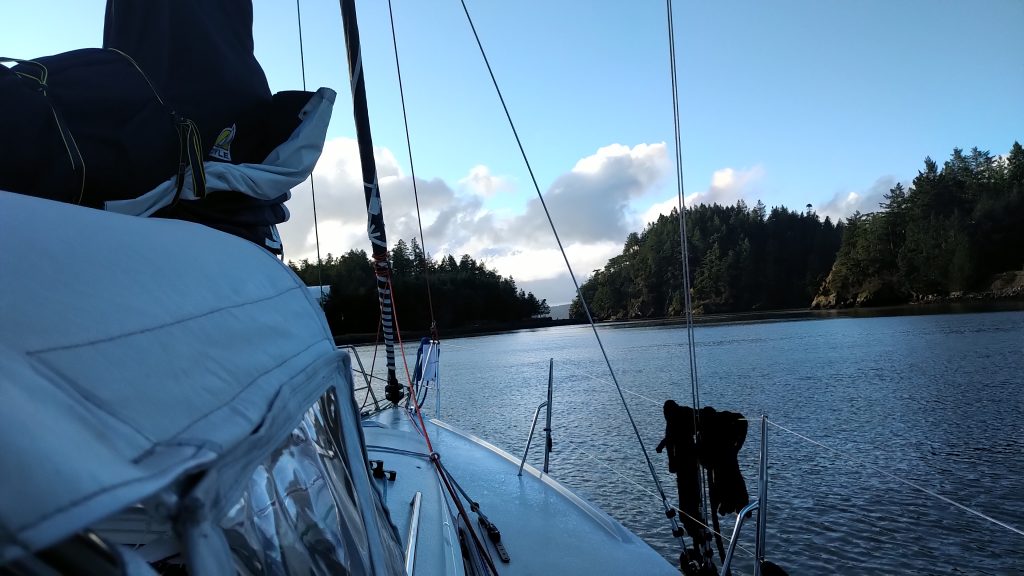
The south end of Swinomish Channel is impressive 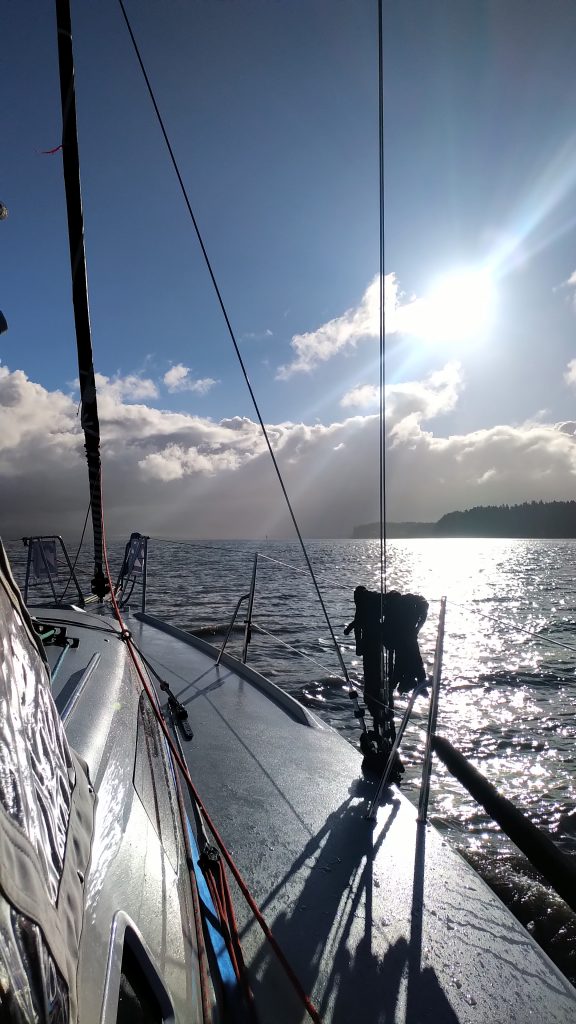
What is that thing
in the sky!?!?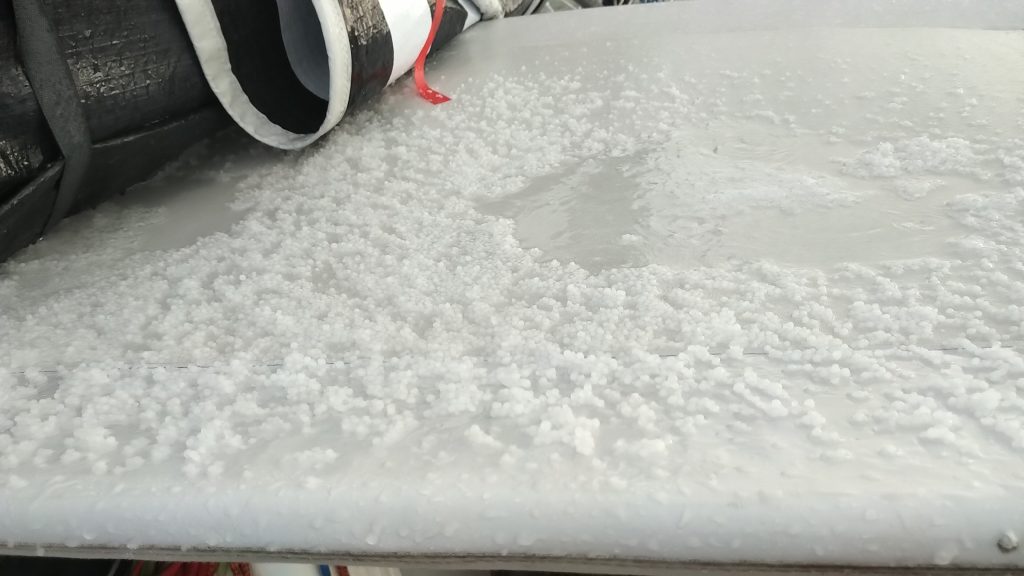
Hail and lots of it. Big, too. Thank goodness for the dodger because these pellets hurt! 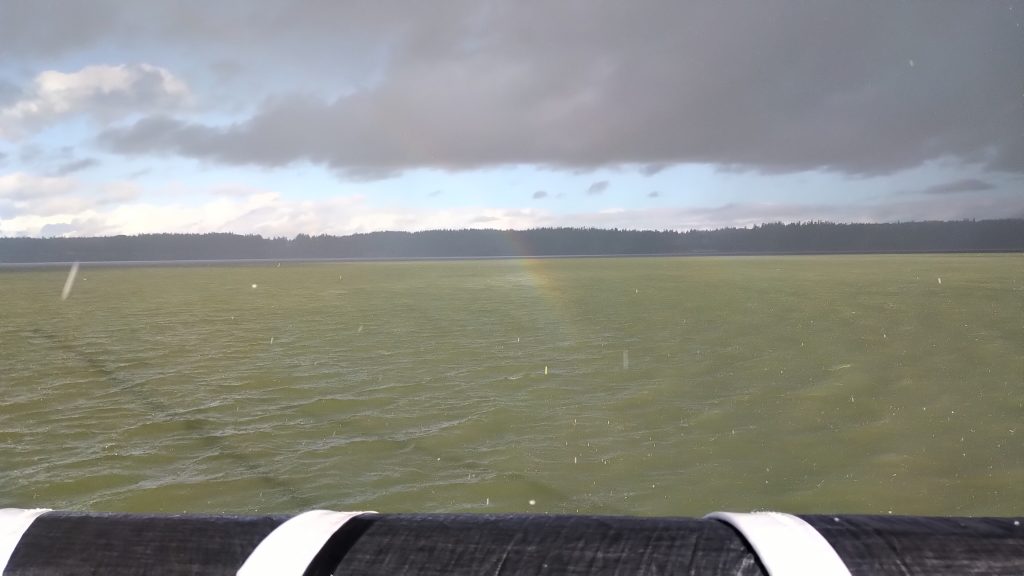
This little rainbow paced me off the port quarter for over an hour, the saving grace to the little bastard of a rain/hail cloud that followed me home.

Being here for 20 years helping to Host the RTC regatta at Roche with the Friday Harbor Sailing Club, and having read so many racing accounts of this regatta, I have to exclaim loudly as a Journalist and Racing Sailor…..This is the best racing article ever written in the History of this Race. I usually just glance an article about the RTC race this time I went back on every word and read a couple of sentences twice to totally visualize the race. You did a wonderful Job and I have posted your article on every sailing FB page I can find. Thank you for that. I was brought to a strong state of concern when I read you went back alone. Been there and won’t do it ever again. Thank you for mentioning the Horrible Death of one of our favorite Sailors and pointing out that it can happen anywhere on the Deck.
Norris, thanks for the very kind words!